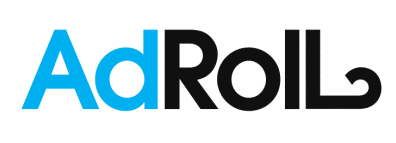So, the big day was soon upon us – NailPolish.co.uk launched on Tuesday 20th May 2014. It’s really important to set a deadline for your launch day, and to stick to it, otherwise you’ll never get lift off (especially if you’re a perfectionist, like me). There were various reasons why I shouldn’t launch the site that day, including:
- A couple of major brands were missing
- I hadn’t had time to categorize all products correctly
- Some products had no description attributed to them
- Some of the product images were not the correct size
Although these reasons might sound quite serious, you’ll find your project gets to a point where it’s burning a hole in your pocket. I spent lots of money on the design and development of the website, I spent lots of time populating the website, and I spent tens of thousands of dollars on stock to sell.
So I did have a few major issues with the website, but the time came when I said “nope – we can’t wait any longer, let’s go live!” – and we launched. On the first day we took around 10 sales, which was pretty impressive. My previous sites have all started with a damp squib, so it felt like a case of starting as we mean to go on.
Traffic, traffic, traffic
A site launch is nothing without a source of traffic. Thousands of new websites come online each day to zero fanfare because they forget this. No one cares that they come online, and no one cares when they slip away gracefully a few years later. That’s just the way the Internet works!

In years gone by, if you wanted to achieve a real buzz around your business on launch day, you had to spend a fortune buying ad space in magazines, newspapers – and even airtime on the radio. Fast forward to 2014 however, and you can pretty much buy customers on tap, as and when you want them – say hello to PPC!
I knew I’d have traffic on launch day because my plan was to configure PPC campaigns in the weeks and months leading up to the launch. The 20th May was simply the day I switched those campaigns on, and my site started to receive traffic.
There are lots of naysayers out there who say that traffic should always be free from search engines – and they’re right to a point. That said, if you’re serious about the success of your ecommerce website, you should be willing to take the plunge and invest in PPC traffic from day one. You can turn PPC traffic on and off like a tap – so when you set a launch date, you know that people will flock to your website to see what it’s all about.
Other methods of online marketing like social media and SEO can take weeks, months or even years to bear fruit. So from my point of view, it’s PPC all the way baby!
There are various PPC networks you can use to drive traffic to your website from day one – I tend to advise search traffic from Google AdWords and Bing Ads as a starting point. You can then look at display network advertising on these platforms – as well as on sites like Facebook and Twitter. Paid clicks aren’t free (obviously), but they send traffic to your website on demand, and on a consistent basis. Make sure your launch goes off with a bang by using paid traffic, don’t just sit and wait for traffic to come to you, you have to go and find it.
Top tip
Before launch day comes around, take some time to look into your options in terms of retargeting (or remarketing, as you may know it). Retargeting involves showing relevant ads to people that have browsed your site in the past. It taps into the memory of the shopper having just seen your brand, or category, or even specific product! The thing with retargeting, however, is that you need to drop a cookie on your visitors’ machines in order for it to work, so there is a little bit of setup you need to do before you launch your site so you capture the visitors after site launch day.

If I hadn’t been dropping cookies from day one, my campaigns would have had to sit idle for a while, waiting for enough people to reach a threshold at which you can start retargeting.
It might take a while to find a retargeting network to use and to setup their code on your website, but it’s well worth it – believe me (especially if you’re paying for traffic from the outset, retargeting to those users allows you to make the very most of your paid traffic budget). AdRoll is an easy one though. Also, you can create retargeting campaigns with GoogleAnalytics and Adwords if you’re more comfortable using Google properties.
Problems?
Knocking wood, I can honestly say there were very few teething problems when the site finally went live. We had a couple of cases where the wrong product image had been added to the wrong product page, and a few cases where product descriptions weren’t entirely accurate (as I mentioned before), but we resolved these problems early on.
The reason the launch went so smooth, I expect, is because I’ve done this a few times now. At this point I’d love to rattle off some mistakes I made with NailPolish.co.uk then utter some wise words for you to nod in agreement with, however I don’t really have any. To that end, I want to look at the common problems most new ecommerce websites run up against:
- Bad hosting
OK, let’s pretend you nail the setup of your PPC campaigns and from the second you set them live, you get lots of traffic. If you’ve not stress tested your website before, you could soon find that it grinds to a halt if the server just can’t cope with the demands from visitors. My advice is to use solid hosting that’s designed for ecommerce websites, don’t scrape by on some “Lite” plan, it’s just not worth it. Think seriously about CDNs (content delivery networks) too – they could be the difference between a successful launch and a complete disaster. Even better, just use a hosted ecommerce solution like Shopify or Bigcommerce!
- Poorly configured payment gateways
It’s amazing how many people forget to test their payment gateways before launch day – or forget to set them up altogether. I always allow at least one week for installation and testing of payment gateways (I use WorldPay), because I invariably set something up wrong, or enter a password incorrectly. Make sure your payment gateway is working properly when your site goes live, and remember to switch off “test” mode.
- Incorrect or irrelevant forms on checkout
I know a guy who launched a website using an open source ecommerce CMS. He didn’t bother negotiating the checkout flow for himself, he assumed it was all setup by default. After a couple of days he’d made no sales, so he had a look at the checkout process – he found that the checkout was enforcing USA based addresses with a zip code. His company was UK based, and only shipped in the UK. This meant he paid a fortune for traffic that would never convert, because his checkout forms were setup incorrectly. I make a point of going through checkout three or four times prior to launch, just to check everything works correctly (yes, I even pay myself for items, just to be sure!).
- No stock/oversells
When you’re adding hundreds of lines to a website, it’s easy to add a product that you don’t actually have in stock. Make sure all of the items you display on your website are physically in stock, otherwise you’ll have to start refunding and apologising to customers from day one, which isn’t a great start for any business.
- Customer service overload
Lots of traffic means lots of potential customers – that also means lots of pre-sales (and after sales) support. Be ready with the infrastructure and systems to deal with lots of customer support. Don’t shy away from dealing with them, tackle them head on and give your customers the great service they deserve.
Of course there are other things that can go wrong with an ecommerce site launch, but the above are just a selection of some of the most frequently encountered problems.
Final thoughts
I think it is fair to say that our site launch was a success. Of course the launch day won’t make or break a business, as I mentioned my other websites had really bad launch days, but they’ve still done OK! Still, it’s nice to see the time and effort I invested in the site pay off from day one. It gave me a big boost and made me want to spend even more time and effort on perfecting the website further.
Going back to some of my other blog posts, I’ve mentioned that one brand in particular just flat out refused to work with us, despite me laying on my typical British charm (rather thick). I’m pleased to say that this particular brand has agreed to supply us, effective immediately! That brings to an end this long saga that has been dragging on for well over 12 months, so as you can imagine, I’m really happy.
All things considered, I’m pleased with the way NailPolish.co.uk has progressed so far. The launch was a success, and our strong sales have meant that previously unobtainable brands will now entertain the idea of working with us. It has been a tough slog, but when things fall into place, it all seems worth it!
In my next post I’m going to look at the on-going maintenance and tweaks required to ensure your ecommerce website is a success – so be sure to check back in a couple of weeks!
Next in the Series: #EcomLaunch 4: Early Order Fulfillment & Bug Squashing


